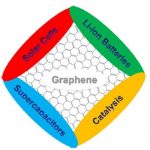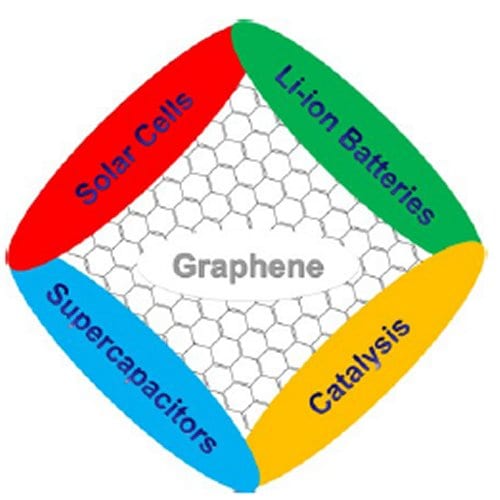 Graphene has the potential to solve many issues in vital energy research, as summarized in a review by Chinese and Australian scientists.
Graphene has the potential to solve many issues in vital energy research, as summarized in a review by Chinese and Australian scientists.
Graphene, a single atom-thick sheet of carbon, is probably the most researched up-and-coming new material of recent times. Its exciting and unique physical and mechanical properties make it attractive to a wide range of disciplines, from hard-core physics, to chemistry, to biology. Different applications, however, may require subtly different properties from the same material, which can be predefined by the production method used.
Energy is also big business; probably one of the most-discussed issues in society today. The likely challenges associated with energy generation and storage in the 21st century and beyond are being addressed now by materials scientists, in the form of solar cells, lithium ion secondary batteries, advanced fuel cells, and supercapacitors, amongst other solutions. Graphene can be used in many of these applications, if available in sufficient quantities and purity.
A recent review by Linjie Zhi and co-workers at the National Center for Nanoscience and Technology, Beijing, China, and Curtin University, Australia, provides an overview of the pros and cons of different routes to graphene; top-down, including exfoliation and chemical reduction of graphene oxide, and bottom-up, including epitaxial growth and synthesis. The authors then go on to look at how graphene can be useful in various energy applications. They show that graphene has contributions to make in many different energy-related areas and detail the challenges that still need to be overcome in order to bring graphene to use in commercial devices.
Zhi and colleagues suggest that in some areas, such as transparent conductive electrodes in photovoltaic devices, graphene-based materials could be in use within only a few years whereas in others, such as pseudocapacitance-based supercapacitors, the research is at a much earlier stage. Graphene is sure to offer many more challenges and highlights in the years to come.

















